10 Best Flowering Shrubs for a Year-Round Pollinator Paradise
Did you know that over 75% of flowering plants rely on pollinators for reproduction? Wow! Creating a pollinator-friendly garden isn’t just beautiful – it’s essential for our ecosystem. As an avid gardener, I’ve discovered the secret to a buzzing, fluttering paradise: flowering shrubs! These powerhouse plants not only add structure and color to your landscape but also provide a vital food source for our tiny winged friends. Ready to transform your garden into a pollinator haven? Let’s dive into the top 10 flowering shrubs that’ll keep your garden thriving all year round!
1. Butterfly Bush (Buddleja davidii)
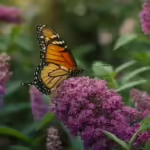 Oh boy, let me tell you about my love affair with butterfly bushes! These beauties are like a magnet for butterflies, bees, and even hummingbirds. I remember the first time I planted one in my backyard – it was like throwing a party and all the cool pollinators showed up!
Oh boy, let me tell you about my love affair with butterfly bushes! These beauties are like a magnet for butterflies, bees, and even hummingbirds. I remember the first time I planted one in my backyard – it was like throwing a party and all the cool pollinators showed up!
These shrubs are real troopers, blooming from summer to fall. And talk about options! You can find ’em in purple, pink, and white. I once made the mistake of planting a whole row of purple ones, thinking it’d look amazing. Well, it did, but then I realized I coulda had a rainbow if I’d mixed it up a bit. Live and learn, right?
The best part? They’re low-maintenance and drought-tolerant. Perfect for lazy gardeners like me who occasionally forget to water. But here’s a pro tip I learned the hard way: deadhead regularly. I used to just let ’em be, thinking nature would take its course. Nope! Deadheading promotes continuous blooming. Who knew?
One summer, I swear my butterfly bush turned into Grand Central Station for pollinators. It was buzzing so much, I thought I had a beehive problem! Turns out, it was just super popular with the local insect crowd. If you want a shrub that’ll make your garden the talk of the pollinator town, butterfly bush is your go-to!
2. Lilac (Syringa vulgaris)
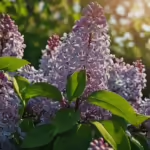 Ah, lilacs! These fragrant beauties are like the old-school celebs of the garden world. They’ve been around forever, but they never go out of style. I gotta admit, I was a late bloomer (pun intended) when it came to appreciating lilacs. I always thought they were just for grandma’s garden, ya know?
Ah, lilacs! These fragrant beauties are like the old-school celebs of the garden world. They’ve been around forever, but they never go out of style. I gotta admit, I was a late bloomer (pun intended) when it came to appreciating lilacs. I always thought they were just for grandma’s garden, ya know?
Boy, was I wrong! These spring-blooming classics are like catnip for bees and butterflies. The first time I saw a bumblebee doing the happy dance on a lilac bloom, I was sold. And let’s talk about that fragrance! It’s like nature’s perfume, wafting through the air and making everything smell amazing.
Colors range from white to deep purple, and I’ve tried ’em all. Pro tip: if you can’t decide, just get one of each! I did that once, and my spring garden looked like a pastel rainbow. It was pretty awesome, if I do say so myself.
Now, here’s the kicker – lilacs are super low-maintenance. They’re like that friend who’s always put together but never brags about it. I’ve had some for years, and they just keep on truckin’ with minimal care. Just give ’em some sun and well-drained soil, and they’ll reward you with years of beautiful blooms.
Oh, and here’s a fun fact I love to drop at garden parties (yes, I go to those now): lilacs symbolize first love in many cultures. How romantic is that? Maybe that’s why I fell head over heels for ’em when I finally gave them a chance!
3. Bluebeard (Caryopteris x clandonensis)
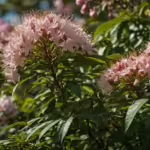 Okay, confession time. When I first heard about Bluebeard, I thought it was some kinda pirate plant. Turns out, it’s this awesome late summer to fall bloomer that’s like a magnet for bees, butterflies, and all sorts of beneficial insects. Who knew?
Okay, confession time. When I first heard about Bluebeard, I thought it was some kinda pirate plant. Turns out, it’s this awesome late summer to fall bloomer that’s like a magnet for bees, butterflies, and all sorts of beneficial insects. Who knew?
I stumbled upon Bluebeard when I was looking for something to spruce up my garden in late summer. You know how everything starts looking a bit meh by August? Well, Bluebeard swooped in like a garden superhero to save the day!
One of the coolest things about this shrub is its compact size. It’s perfect for small gardens or those awkward spots where nothing else seems to fit. I’ve got mine in a corner that used to be a total eyesore, and now it’s like the crown jewel of my late summer garden.
Here’s a neat trick I learned: Bluebeard is super drought-tolerant once it’s established. I found this out by accident when I went on vacation and forgot to set up my sprinkler system. Came back expecting a crispy critter, but nope! It was thriving like nothing happened. Talk about a low-maintenance dream!
Oh, and get this – the aromatic foliage actually repels deer and rabbits. I used to have a huge problem with Bambi and friends treating my garden like an all-you-can-eat buffet. But ever since I planted Bluebeard, they’ve been giving my yard a wide berth. It’s like having a bouncer for your garden!
So if you’re looking for a plant that’ll keep your garden buzzing into fall, give Bluebeard a shot. Just don’t expect it to start singing sea shanties or anything. Though that would be pretty cool, wouldn’t it?
4. Weigela (Weigela florida)
 Let me tell you about Weigela, the unsung hero of my spring garden. This shrub is like that friend who’s always ready to party but doesn’t need to be the center of attention, ya know? It blooms from spring to early summer, and boy, does it put on a show!
Let me tell you about Weigela, the unsung hero of my spring garden. This shrub is like that friend who’s always ready to party but doesn’t need to be the center of attention, ya know? It blooms from spring to early summer, and boy, does it put on a show!
The first time I planted Weigela, I had no idea what I was in for. Those tubular flowers? They’re like an all-you-can-eat buffet for hummingbirds! I remember sitting on my porch one morning, coffee in hand, watching these tiny acrobats zip around my Weigela. It was like my own personal nature documentary!
Now, here’s where I goofed up – and you can learn from my mistake. I planted my first Weigela in a spot where I couldn’t see it from the house. Big mistake! Pro tip: plant these babies near windows so you can enjoy the hummingbird visits. Trust me, it’s better than anything on TV.
One of the things I love about Weigela is the variety. You’ve got different sizes and colors to choose from. I went a bit overboard one year and planted like five different varieties. My garden looked like a rainbow explosion, but hey, the pollinators loved it!
And let’s talk about maintenance – or lack thereof. These shrubs are so easy to grow, it’s almost embarrassing. I’ve killed cacti before (don’t ask), but my Weigelas? They just keep on thrivin’. It’s like they’re determined to make me look like a gardening genius.
So, if you want a shrub that’ll bring the hummingbird party to your yard and make you feel like a gardening pro, Weigela’s your gal. Just be prepared for your neighbors to start asking for gardening advice. Don’t worry, I won’t tell them how easy it really is!
5. Azalea (Rhododendron spp.)
 Alright, let’s chat about Azaleas – the divas of the shrub world. These beauties are like the Beyoncé of my garden, stealing the show every spring with their stunning flower displays. But let me tell ya, they can be as high-maintenance as a pop star sometimes!
Alright, let’s chat about Azaleas – the divas of the shrub world. These beauties are like the Beyoncé of my garden, stealing the show every spring with their stunning flower displays. But let me tell ya, they can be as high-maintenance as a pop star sometimes!
I remember the first time I planted an Azalea. I was so excited, envisioning this glorious burst of color in my yard. What I didn’t realize was that these ladies have some specific demands. They’re like, “Give me partial shade and acidic soil, or I’m not performing!” Talk about a rider clause, right?
But oh boy, when you get it right, it’s like nature’s fireworks show! Butterflies and hummingbirds flock to these shrubs like paparazzi to a red carpet. I’ve spent hours just watching the pollinators do their thing. It’s better than any nature documentary, I swear.
Now, here’s a little secret – there are evergreen AND deciduous varieties. I learned this the hard way when I thought my deciduous Azalea had died over winter. Imagine my surprise (and relief) when it sprouted back to life in spring!
Oh, and word to the wise – if you’ve got fur babies, be careful where you place these shrubs. They’re toxic to pets. I found out about this after planting a whole row of them along my fence. Cue me frantically replanting them in the backyard, away from my curious pup. Live and learn, right?
Despite their diva tendencies, I gotta say, Azaleas are worth the effort. When they’re in full bloom, it’s like having your own personal flower show right in your yard. Just be prepared for some pruning and soil adjusting. And maybe invest in some good gardening gloves – those branches can be prickly!
6. Rose of Sharon (Hibiscus syriacus)
 Okay, let’s talk about the Rose of Sharon – the late bloomer of the garden world. This shrub is like that friend who shows up late to the party but brings the best snacks. It starts blooming in late summer when everything else is starting to look a bit tired, and BAM! Instant garden revival!
Okay, let’s talk about the Rose of Sharon – the late bloomer of the garden world. This shrub is like that friend who shows up late to the party but brings the best snacks. It starts blooming in late summer when everything else is starting to look a bit tired, and BAM! Instant garden revival!
I gotta admit, I was a bit skeptical when I first planted one. I mean, who needs flowers in August, right? Boy, was I wrong! The first time I saw those large, showy flowers, I was hooked. And let me tell ya, I wasn’t the only one. My Rose of Sharon became like the local hangout for all sorts of pollinators.
Now, here’s a fun fact that’ll make you sound smart at garden parties – the Rose of Sharon isn’t actually a rose! I made that mistake once and got schooled by a local horticulturist. Talk about embarrassing! It’s actually part of the hibiscus family. Who knew?
One of the coolest things about this shrub is how tolerant it is of urban conditions. I’ve got a friend who lives in the city and swears by her Rose of Sharon. It’s like the tough guy of the flower world, thriving where other plants would throw in the towel.
Oh, and let’s talk about options! You can get these bad boys with single or double blooms. I went for the doubles because, well, more is more, right? It’s like having a bouquet right there on the bush. Just be warned – once you start with Rose of Sharon, you might get a bit obsessed. I may or may not have five different varieties in my yard now…
So, if you want a shrub that’ll keep your garden party going into fall, give Rose of Sharon a shot. Just don’t call it a rose, unless you want to get the side-eye from garden geeks like me!
7. Spirea (Spiraea spp.)
 Alright, let’s chat about Spirea – the overachiever of the shrub world. These little powerhouses bloom either in spring or summer, depending on the variety. It’s like they couldn’t decide which season to shine in, so they said, “Why not both?”
Alright, let’s chat about Spirea – the overachiever of the shrub world. These little powerhouses bloom either in spring or summer, depending on the variety. It’s like they couldn’t decide which season to shine in, so they said, “Why not both?”
I remember when I first planted a Spirea. I chose a spot near my patio, thinking it’d be a nice little accent. Fast forward a couple of years, and BAM! It’s become the star of the show. Butterflies and other beneficial insects flock to it like it’s giving away free nectar. Which, I guess, it kinda is!
One of the things I love about Spirea is how compact they are. They’re perfect for borders or containers. I’ve even got one in a big pot on my deck. It’s like having a mini garden right outside my door. And let me tell you, it’s a great conversation starter when friends come over.
Now, here’s where I goofed up – and you can learn from my mistake. I didn’t prune my Spirea after it flowered the first year. Big mistake! The next year, it looked a bit… well, let’s just say it had a bad hair day. Tip: prune after flowering to maintain that nice, tidy shape.
But here’s the best part – these shrubs are low-maintenance and fast-growing. It’s like they’re trying to make us amateur gardeners look good. I’ve killed more plants than I care to admit, but my Spirea? It just keeps on thriving, despite my best efforts to mess it up.
Oh, and get this – there are so many varieties to choose from. I started with one, and now I’ve got a collection. It’s like Pokemon for gardeners – gotta catch ’em all! From the classic Bridal Wreath to the vibrant Japanese Spirea, there’s a type for every garden style.
So, if you want a shrub that’s gonna work as hard as you do (or harder, let’s be real), give Spirea a shot. Just be warned – you might end up with a yard full of ’em. But hey, there are worse addictions to have, right?
8. Viburnum (Viburnum spp.)
 Let’s talk about Viburnum, the multi-tasker of the shrub world. These guys are like the Swiss Army knives of gardens – they’ve got a little bit of everything! Most of ’em bloom in spring, but some rebellious types decide to flower in fall. It’s like they didn’t get the memo about seasonal schedules!
Let’s talk about Viburnum, the multi-tasker of the shrub world. These guys are like the Swiss Army knives of gardens – they’ve got a little bit of everything! Most of ’em bloom in spring, but some rebellious types decide to flower in fall. It’s like they didn’t get the memo about seasonal schedules!
I remember the first time I caught a whiff of a blooming Viburnum. Holy moly, talk about fragrant! It was like Mother Nature’s perfume counter. And I wasn’t the only one who noticed – bees and butterflies were having a field day. It was like watching a nature documentary right in my backyard!
Now, here’s where it gets really cool. Many Viburnum species don’t just stop at flowers – they go on to produce berries. It’s like they’re saying, “Hey birds, don’t forget about us!” I’ve spent hours watching robins and cardinals feast on these berries. Who needs TV when you’ve got this kind of entertainment?
One thing I love about Viburnum is the diversity. There’s a size and growth habit for every garden. I started with a compact one in a small corner of my yard. Fast forward a few years, and now I’ve got different varieties all over the place. It’s like I’m running a Viburnum bed and breakfast for local wildlife!
Oh, and here’s a fun fact that’ll make you sound smart at garden parties – some Viburnums have edible berries! I found this out by accident when I saw my neighbor popping them into his mouth. Nearly gave me a heart attack until he explained. Now, I’m not saying go out and start munching on your shrubs, but it’s pretty cool to know, right?
But let me tell you, choosing a Viburnum can be overwhelming. There are so many species! I once spent an entire afternoon at the nursery, trying to decide. The poor staff probably thought I was casing the joint. Pro tip: decide what you want (flowers, berries, fall color) before you go shopping. Trust me, it’ll save you from decision paralysis!
So, if you want a shrub that’s gonna give you flowers, berries, and a show of wildlife, Viburnum’s your guy. Just be prepared for your yard to become the local hot spot for birds and butterflies. But hey, there are worse problems to have, right?
9. Dogwood (Cornus spp.)
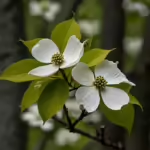 Alright, let’s chat about Dogwood – the overachiever of the shrub world. These beauties don’t just bloom in spring; they’ve got to show off in fall too with their gorgeous foliage. It’s like they’re saying, “Hey, look at me! I’m not just a one-season wonder!”
Alright, let’s chat about Dogwood – the overachiever of the shrub world. These beauties don’t just bloom in spring; they’ve got to show off in fall too with their gorgeous foliage. It’s like they’re saying, “Hey, look at me! I’m not just a one-season wonder!”
I remember the first time I planted a Dogwood. I was all excited about the spring flowers, but man, was I in for a surprise come autumn! The leaves turned this amazing reddish-purple color. I felt like I’d won the garden lottery – two shows for the price of one!
Now, here’s where it gets really cool. Dogwoods aren’t just pretty faces; they’re like an all-you-can-eat buffet for wildlife. The flowers attract bees and butterflies like nobody’s business. I swear, sometimes my Dogwood looks like it’s having a garden rave with all the pollinators buzzing around!
But wait, there’s more! (I sound like an infomercial, don’t I?) After the flowers fade, many Dogwoods produce berries. And let me tell you, birds go nuts for these things. It’s like I’ve set up a five-star restaurant for my feathered friends. I’ve spent hours just watching the bird drama unfold. Who needs reality TV when you’ve got this?
Oh, and get this – some varieties have colorful winter stems. I learned this the hard way when I pruned my red-twig Dogwood too aggressively one fall. Come winter, I was kicking myself for cutting off all that gorgeous color. Lesson learned: sometimes less is more when it comes to pruning!
Now, here’s a pro tip I picked up along the way: choose native species for the best ecological benefits. I made the mistake of planting a non-native variety once, and while it looked pretty, it just didn’t have the same buzz of activity around it. Live and learn, right?
So, if you want a shrub that’s gonna work harder than you do in the garden, Dogwood’s your guy. Just be prepared for your yard to become the local hangout for every bird and butterfly in the neighborhood. But hey, at least you’ll have plenty of entertainment while you’re sipping your morning coffee!
10. Hydrangea (Hydrangea spp.)
 Oh boy, let me tell you about Hydrangeas – the drama queens of the garden world! These showstoppers bloom from summer to fall, and let me tell ya, they know how to make an entrance. The first time I saw a Hydrangea in full bloom, I thought I’d stumbled into some kind of floral wonderland!
Oh boy, let me tell you about Hydrangeas – the drama queens of the garden world! These showstoppers bloom from summer to fall, and let me tell ya, they know how to make an entrance. The first time I saw a Hydrangea in full bloom, I thought I’d stumbled into some kind of floral wonderland!
Now, here’s the cool part – Hydrangeas don’t just have flowers, they have these massive clusters that look like flower bouquets right on the bush. It’s like nature’s way of saying, “Why buy a bouquet when you can grow one?” And let me tell you, bees and butterflies go absolutely bonkers for these things. It’s like watching a pollinator party every day!
But wait, it gets better. Hydrangeas come in a whole rainbow of colors. I got a bit carried away one year and planted like five different varieties. My garden looked like a color explosion, but hey, go big or go home, right?
Now, here’s where it gets really wild. Some Hydrangeas are like mood rings – they change color based on the soil pH. I discovered this by accident when I added some coffee grounds to the soil around my blue Hydrangea. Next thing I know, it’s sporting pink blooms! I felt like a garden magician.
Oh, and here’s a little bonus I discovered – Hydrangea flowers make awesome dried decorations. I’ve got vases full of them all over my house. It’s like having a piece of summer indoors all year round. Just be careful when you’re drying them – I once left a bunch in my garage and forgot about them. Let’s just say they weren’t exactly decoration-worthy when I finally remembered them!
But I gotta warn you – once you start with Hydrangeas, it’s hard to stop. I started with one, and now I’ve got… well, let’s just say I’ve lost count. They’re like potato chips – you can’t have just one!
So, if you want a shrub that’s gonna bring the wow factor to your garden and keep you entertained with its color-changing tricks, Hydrangea’s your gal. Just be prepared for your neighbors to start asking for gardening advice. And maybe invest in some extra vases!
Conclusion
There you have it – 10 fantastic flowering shrubs to transform your garden into a pollinator paradise! By incorporating these beauties into your landscape, you’ll create a vibrant, buzzing ecosystem that supports local wildlife year-round. Remember, diversity is key! Mix and match these shrubs to provide a continuous buffet for our pollinator pals.
Looking back on my gardening journey, I can’t help but chuckle at some of the mistakes I’ve made. Like that time I planted a whole row of the same shrub, only to realize later that variety is the spice of life – and gardens! But hey, that’s how we learn, right?
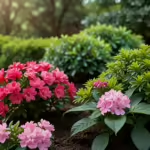 Now, don’t forget to consider your specific climate and soil conditions when choosing your shrubs. What works in my yard might not be perfect for yours. It’s all about finding that sweet spot between what you love and what thrives in your area. Trust me, I learned this the hard way after trying to grow azaleas in my alkaline soil. Oops!
Now, don’t forget to consider your specific climate and soil conditions when choosing your shrubs. What works in my yard might not be perfect for yours. It’s all about finding that sweet spot between what you love and what thrives in your area. Trust me, I learned this the hard way after trying to grow azaleas in my alkaline soil. Oops!
Oh, and one more thing – while we’re all excited about creating a pollinator paradise, remember to garden responsibly. Avoid pesticides that can harm our buzzing friends, and try to incorporate native plants when possible. It’s all about creating a balanced ecosystem, after all.
Ready to get planting? Your garden (and the pollinators) will thank you! And hey, why not share your experiences in the comments? I’d love to hear about your successes, failures, and everything in between. After all, we’re all in this gardening adventure together!
Happy gardening, and let’s keep our world blooming!




Post Comment